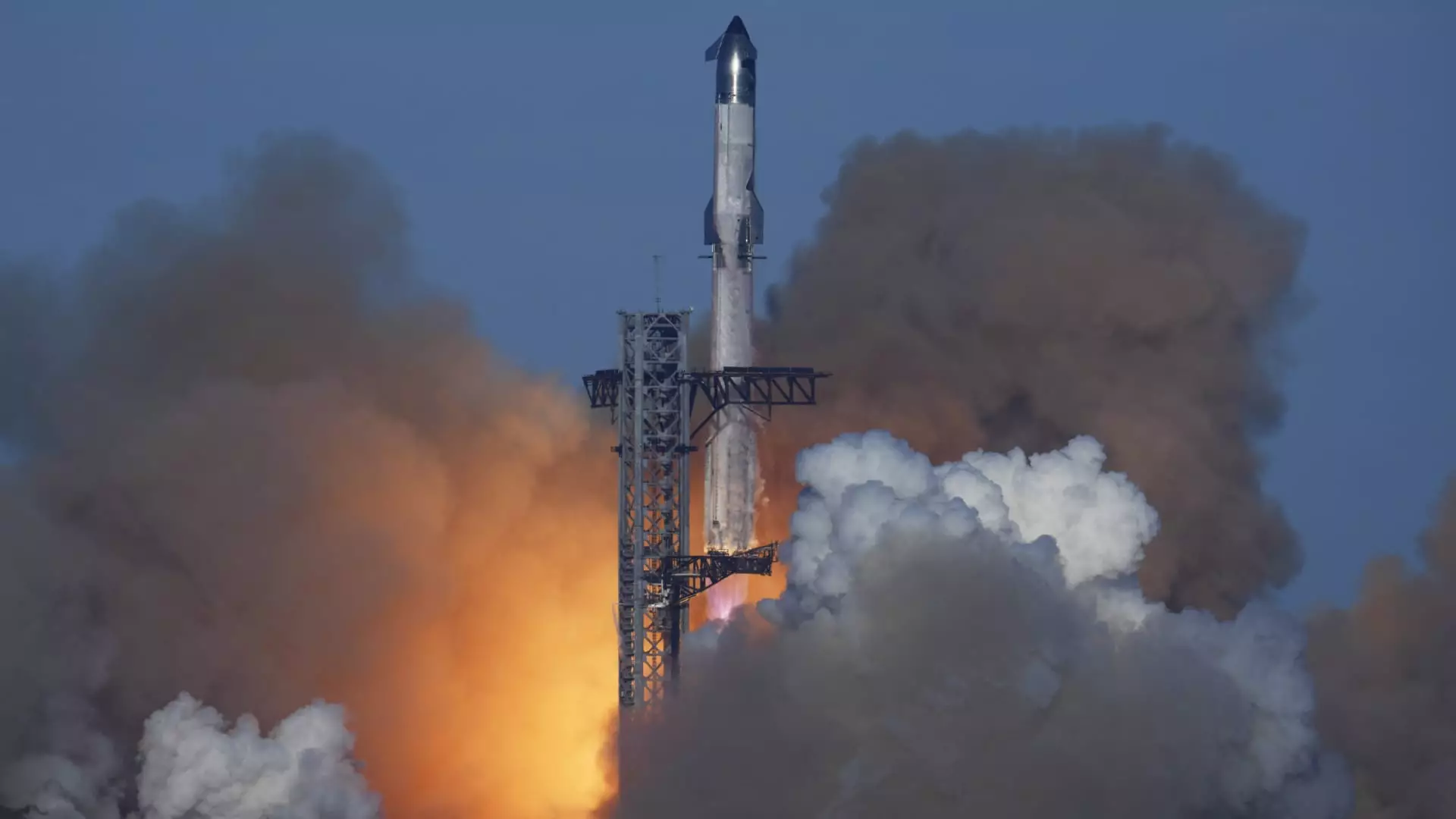Recent developments in the realm of aerospace technology have sent shockwaves throughout the industry, primarily due to the midflight failure of SpaceX’s ambitious Starship rocket. The Federal Aviation Administration (FAA) announced that the spacecraft will remain grounded while both the agency and SpaceX conduct a thorough investigation into the circumstances surrounding the incident. This failure not only affected the mission itself but also had significant repercussions for commercial airline operations, leading to flight diversions and delays from major carriers such as American Airlines, JetBlue, and Delta Air Lines.
While the FAA confirmed that there were no reports of injuries to the public, it did receive notifications of property damage in the Turks and Caicos Islands. This revelation underscores the inherent risks associated with rocket launches and raises questions about safety protocols. The incident could potentially disrupt not just SpaceX’s forthcoming missions but also the regulatory framework governing aerospace operations.
FAA’s Precautionary Measures
In light of the rocket’s midflight explosion, which was attributed to a possible fire in the vehicle, the FAA took immediate action by activating a “Debris Response Area.” This initiative was aimed at alerting commercial aircraft of any debris that may have fallen outside designated hazard zones during the launch. Prior to any rocket launch, the FAA issues “Aircraft Hazard Areas” to inform pilots of potential risks, demonstrating its commitment to ensuring public safety in the crowded airspace.
The conflicting information released by SpaceX and the FAA regarding the debris fall zones raises significant concerns. Initial statements from SpaceX claimed that debris had descended into the Atlantic Ocean within predefined hazard areas, which seemed to contradict the FAA’s reasoning for activating the Debris Response Area. By Friday, SpaceX adjusted its narrative, stating more broadly that all surviving pieces would have fallen into designated zones, but the inconsistency left some stakeholders questioning the accuracy of both parties’ statements.
Looking Ahead: Regulatory and Operational Challenges
With the investigation still underway, the future of the Starship program hangs in the balance. SpaceX faces the challenge of implementing corrective actions as mandated by the FAA, which is essential for obtaining a new launch license. The incident could lead to stricter regulatory scrutiny not only for SpaceX but potentially for the entire aerospace sector, as agencies meticulously evaluate safety measures in light of this high-profile failure.
The reliance on private aerospace companies to innovate and expand humanity’s reach into space is being tested. SpaceX’s ambitions were already ambitious, aimed at facilitating interplanetary travel and establishing a human presence on Mars. However, this setback raises important discussions about risk management, accountability, and the role of regulatory bodies in fostering a safe environment for both space exploration and commercial aviation.
The grounding of SpaceX’s Starship signals a critical juncture in aerospace operations, where the intersection of innovation, safety, and regulation must be navigated with the utmost care. As investigations continue, the industry will watch closely, understanding that the trajectory of future space exploration depends heavily on the lessons learned from this failure.

